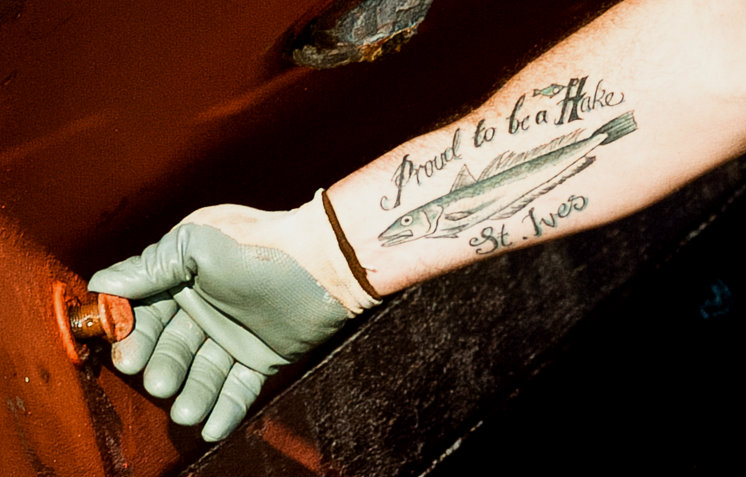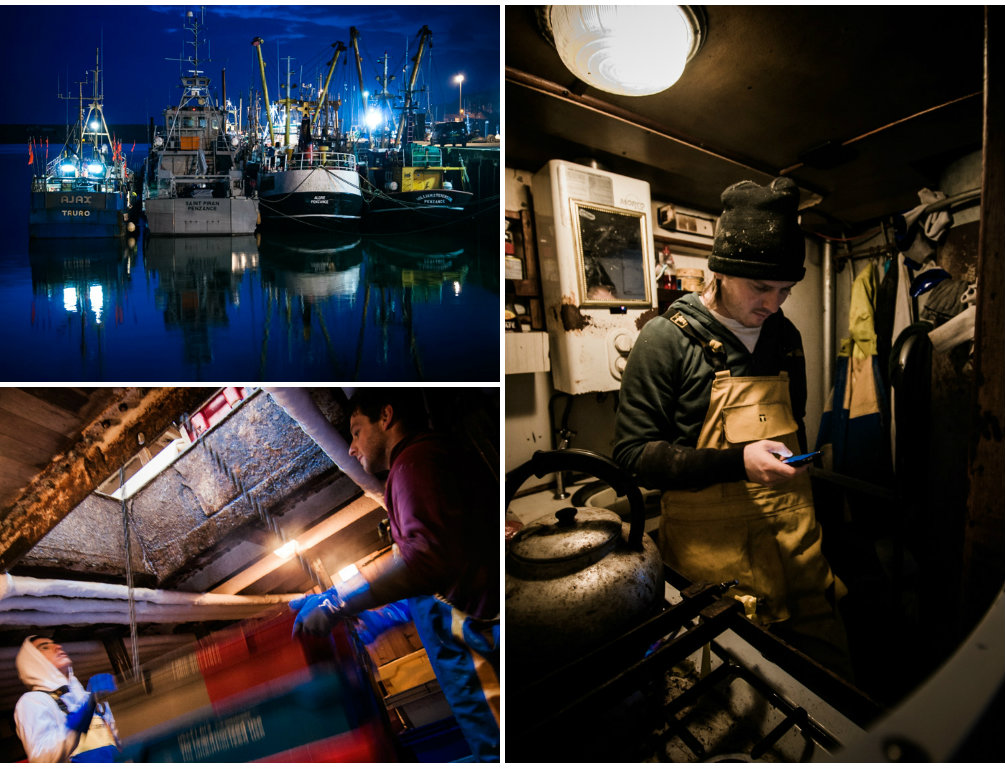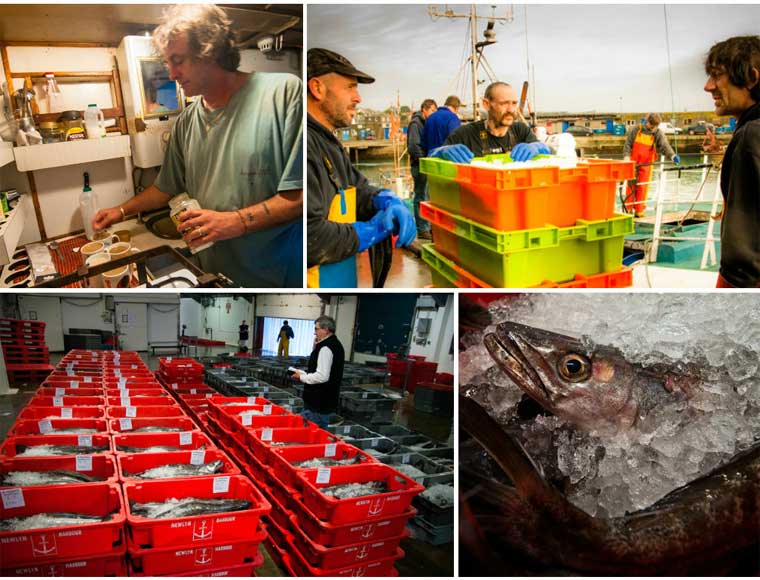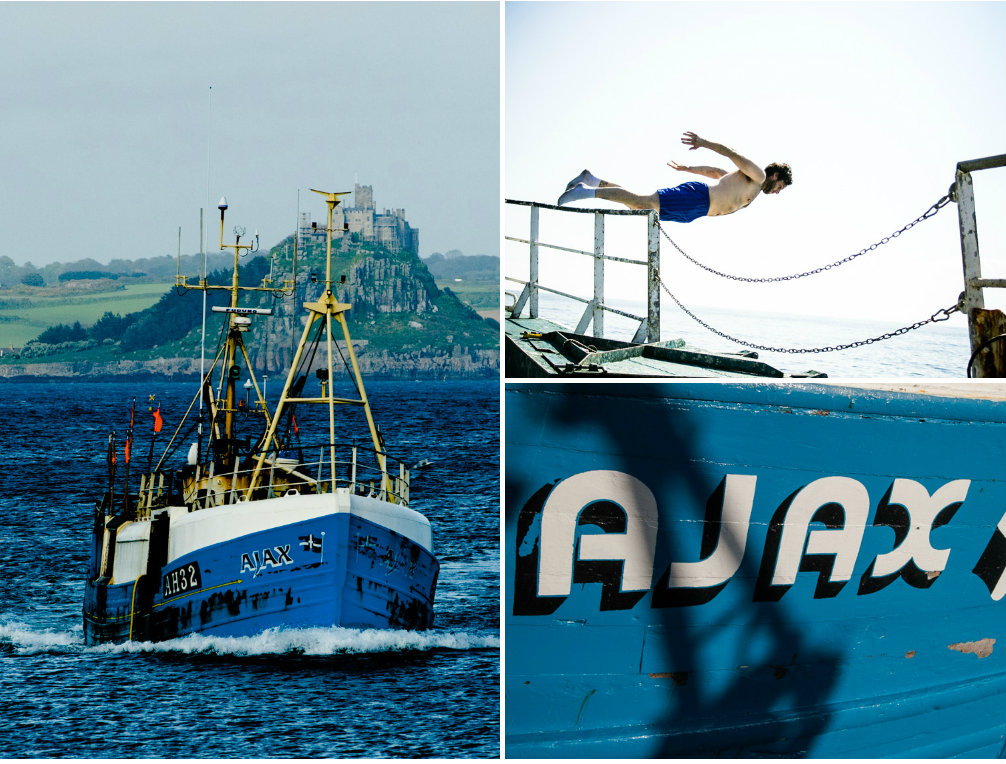Riding the wave
Alan Dwan is a master at catching the hake now teeming in Cornish waters. He’s no slouch at cooking it either, says fisherman turned teacher, blogger and photographer Larry Hartwell.
“It doesn’t matter if we are 25 miles or 170 miles off, we are catching fish everywhere,” says Alan Dwan, skipper of the Ajax. Since getting back to sea after the worst winter’s weather in living memory, the 18-metre boat has seen heavy fishing wherever she goes. This last neap tide was typical, when the boat landed over 200 boxes (33kg a box or 5 stone) of hake for two days fishing 170 miles west of Newlyn, off the south of Ireland, and then 225 boxes of big white fish such as pollack from just west of the Isles of Scilly.

Ajax is one of a small but highly efficient fleet of gillnetters working from Newlyn, England’s premiere netting port and the second biggest port in England by turnover. Typically, the boats work a fleet of nets made up of four tiers of around eight miles in length. These nets are highly selective, catching only mature fish with an almost zero bycatch of other species.
Several Newlyn boats have worked closely with the Centre for Environment, Fisheries and Aquaculture Science (Cefas: one of the leading scientific advisory organisations on fish), taking observers to sea over several years in order to determine the optimum mesh size for hake and reduce discards to a minimum.

The past few years have seen big rises in the amount of fish over all the grounds. Two years ago the boat worked six tiers of nets every day: some 12 miles in total. Now the boat works only four tiers, making up eight miles of net, yet the catches are on average bigger.
After steaming to the grounds, the skipper’s choice of where to fish is based on a combination of past fishing data, the weather forecast, the time of year, the tide, current or likely market prices for the expected catch, as well as signs of fish on the fish-finding electronics and, of course, a skipper’s instinct. The wheelhouse has a huge range of PC-based electronics and includes VHF radio scanners that allow the skipper to monitor conversations from other boats fishing or on passage.
Once the nets have been put in the water the crew can relax, eat and sleep as the nets get at least a 12-hour “soaking” before being picked up, normally at first light the following day. Then, provided there are fish coming aboard, the tier of nets will get shot back in a similar area almost immediately. Hauling, steaming, shooting, picking out fish from the nets, gutting, washing, sorting and storing fish down below in the refrigerated fish room goes on all day and into the night before all the tiers have been hauled and shot away again.

These days, the skipper records every fishing operation on a daily basis in an electronic fishing “elog”. The log is connected live via an Inmarsat C link to the Marine Management Organisation (MMO): the organisation charged with overseeing the administration of quotas and catch data by all members of the EU fishing community. Even when not fishing the log shows where and what the boat is doing. Skipper Alan’s job at the end of each day is to see that this data is successfully uploaded – or face prosecution.
The sea around the UK is divided into areas controlled by the International Council for the Exploration of the Sea (ICES: a global scientific advisory body) and moving between these areas can mean very different quotas being applied. If a boat runs out of quota, as many often do, there are ways to lease more, although this comes with a hefty price tag.
Skipper Alan and the other hake fishermen from Newlyn are determined to put hake on the plates of more people in the UK. Long a huge favourite in southern Europe, particularly Spain, it’s increasingly becoming popular with UK chefs such as Nathan Outlaw, who sang its praises on a recent edition of Saturday Kitchen. Fellow hake skipper Phil Mitchell recently attended a promotional hake feast in London along with chef Mitch Tonks and others to celebrate its versatility. And the MSC is about to award Cornish hake gold accreditation status, which should see the supermarkets willing to promote the fish on their counters.

If you are lucky enough to live near a wet fish shop ask for Cornish hake: the Ajax has its own web site and many fish shops now make it known to their customers who caught their fish. Alan himself loves to experiment between trips cooking his prize catch with the pick of the sea available every time he lands to the market, hake, Dublin Bay prawns, shellfish sauce and samphire being his most recent dish. You can find plenty of recipes for hake from Rick Stein and other Cornish chefs on the Ajax website – along with the latest fishing news – or it makes a perfect substitute for any recipes with cod, coley, pollack or haddock.
Click here to see Ajax’s recipe for At-Sea Thai Curry.
Social media like Twitter has opened a whole new line of communication for UK fishermen who can now be contacted by anyone who wants to know more about fish, the boats and men (and women) who catch them.
@Ajax_Hake
@GovenekOf
@simonpw3
@BembridgeFish
@jrclarkbf800
@alanjohnaddison
@buddingrose418
– all fishermen on Twitter, to name but a few. Keep your eyes peeled for more hake news on the web and #eatmorefish, says skipper Alan!
Ex-trawler skipper Laurence Hartwell currently works in Further Education teaching all things digital on IT, Media and Art courses at Penwith College in Penzance. He writes and edits Through the Gaps, a blog that exists to promote, inform and entertain anybody with an interest in fish and fishing and helps present a focus for discussion and debate to which all sections of the industry and marine bodies and organisations can subscribe. He is also a keen photographer: all the pictures on this post are his.





